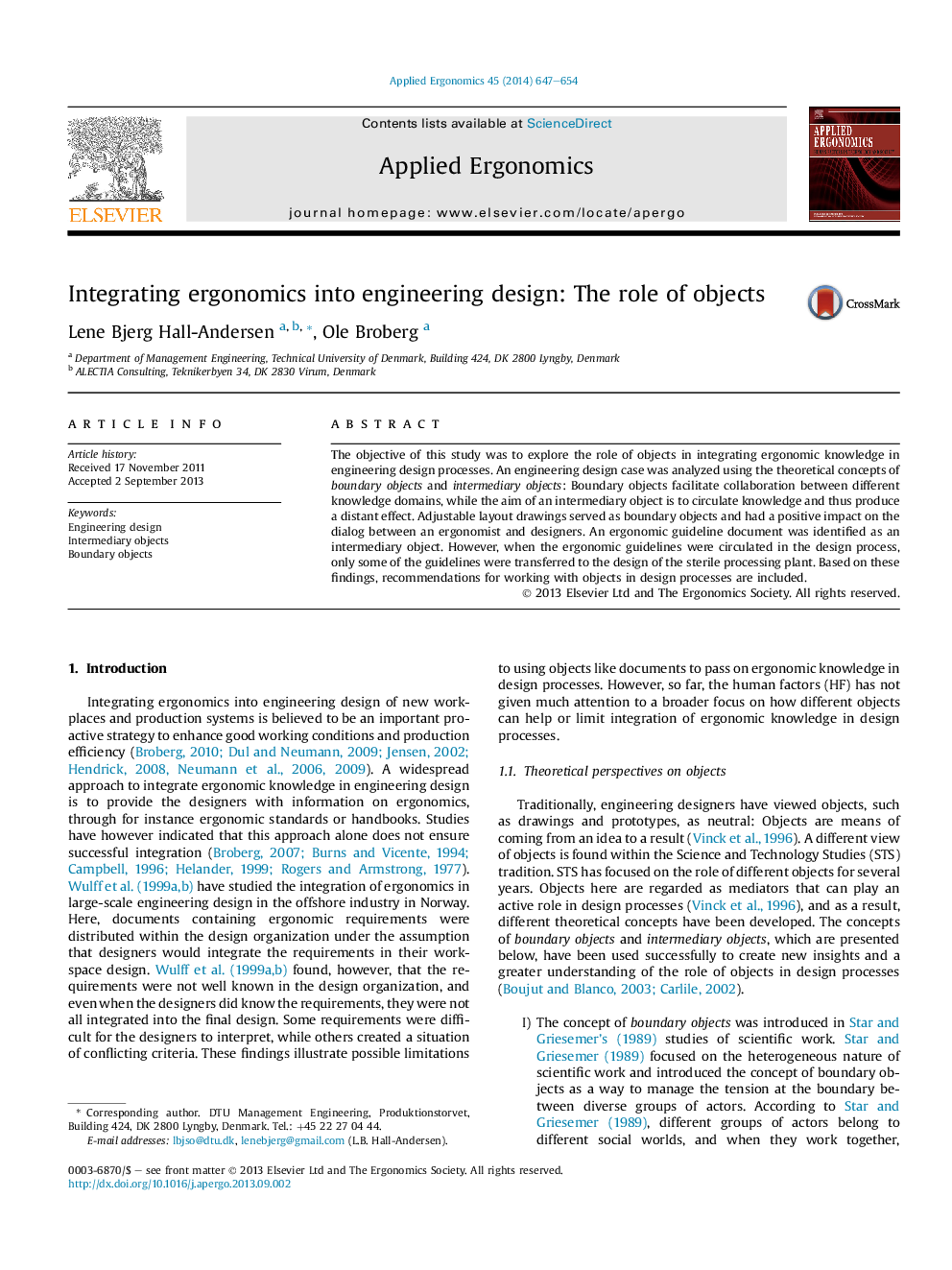| Article ID | Journal | Published Year | Pages | File Type |
|---|---|---|---|---|
| 551109 | Applied Ergonomics | 2014 | 8 Pages |
•Objects can play an important but often unrecognized role in integrating ergonomic knowledge into a design process.•Boundary objects can help to facilitate a dialog between design actors and help to bring ergonomic knowledge into action.•In a design process ergonomic guideline texts are likely to be transformed, not just transferred.•Ergonomic guideline texts should be supported by an ergonomist having an active role throughout design processes.
The objective of this study was to explore the role of objects in integrating ergonomic knowledge in engineering design processes. An engineering design case was analyzed using the theoretical concepts of boundary objects and intermediary objects: Boundary objects facilitate collaboration between different knowledge domains, while the aim of an intermediary object is to circulate knowledge and thus produce a distant effect. Adjustable layout drawings served as boundary objects and had a positive impact on the dialog between an ergonomist and designers. An ergonomic guideline document was identified as an intermediary object. However, when the ergonomic guidelines were circulated in the design process, only some of the guidelines were transferred to the design of the sterile processing plant. Based on these findings, recommendations for working with objects in design processes are included.
